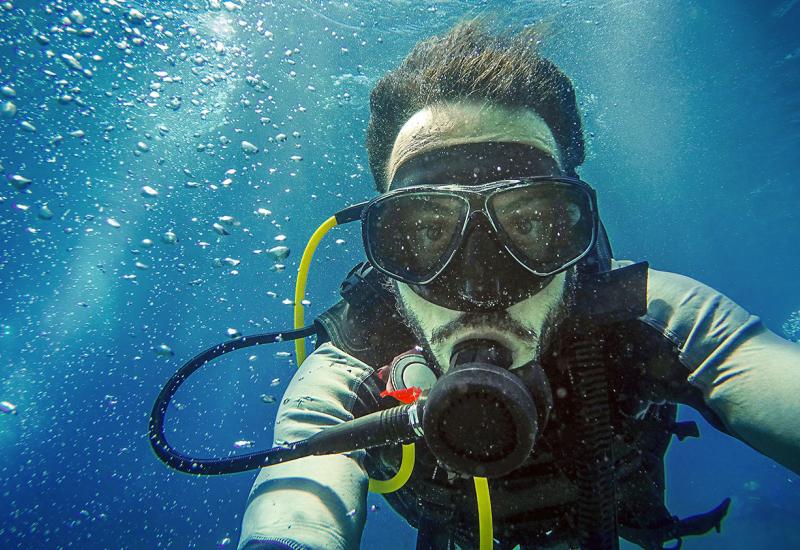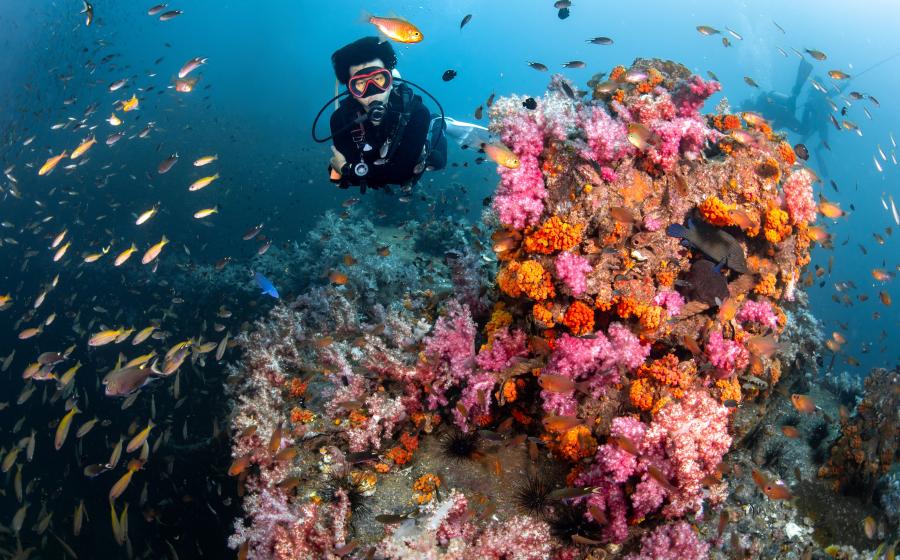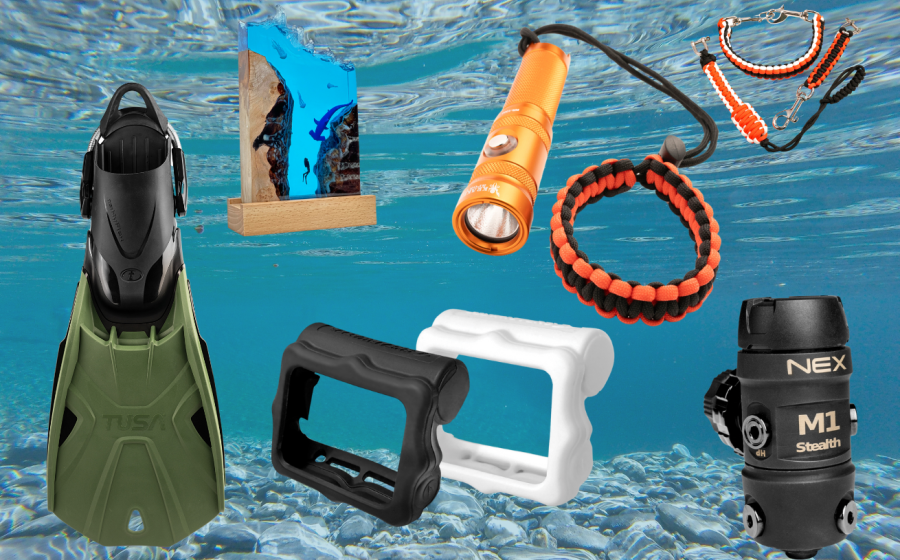How to Make a Perfect Scuba Diving Back-Roll Entry
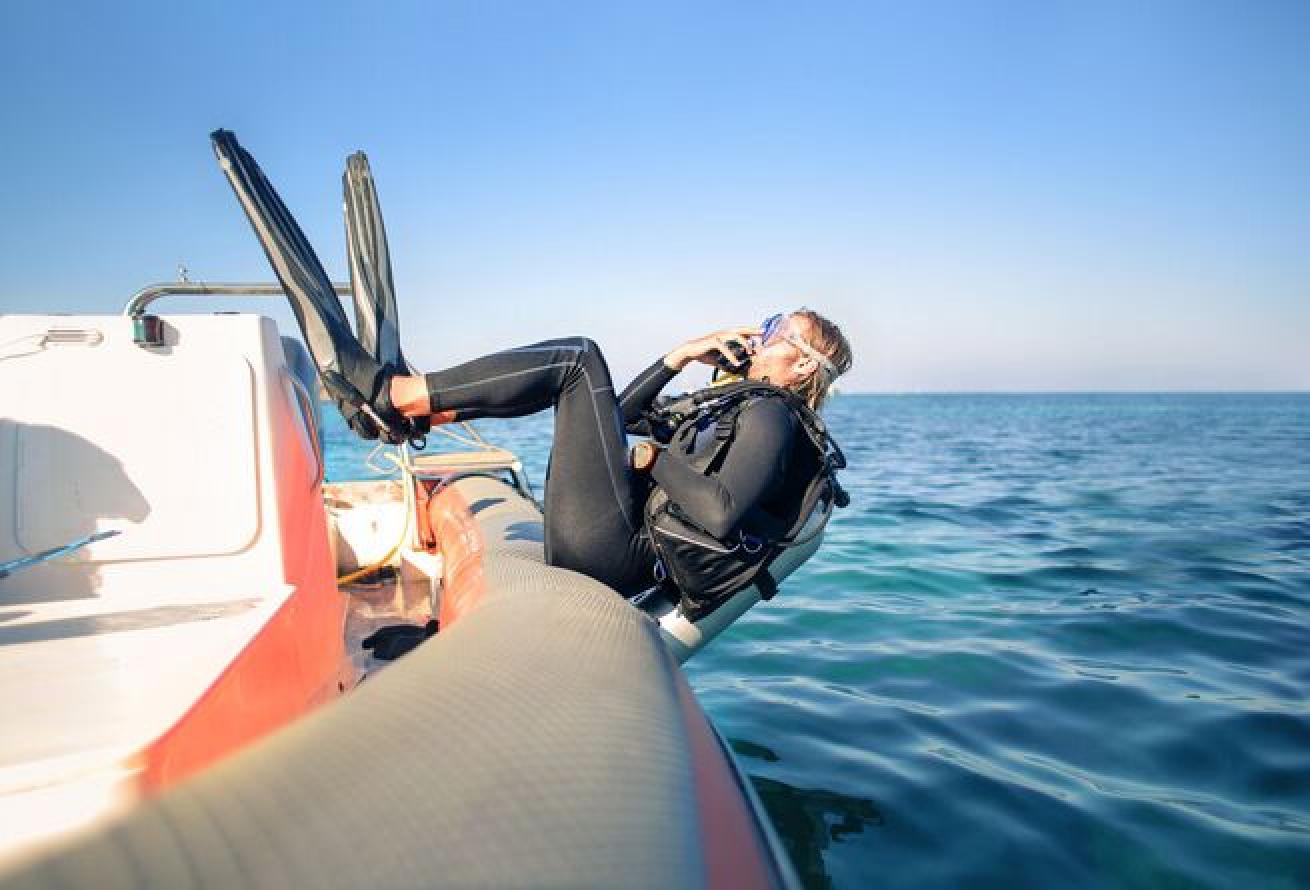
Merla/ShutterstockWhen scuba diving from a small or inflatable boat that doesn’t have an entry/exit platform, making a back-roll entry is the safest, most efficient way to start your dive.
Scuba divers used to making giant-stride entries from a dive boat can find the prospect of making a back-roll entry a bit daunting. The back-roll entry is how you’ll be asked get in the water when diving from a smaller boat or tender, especially RIBs (rigid inflatable boats). For those who dive from these types of boats, the entry is second-nature, easy and no big deal. But it’s generally not taught in an open-water class, so the first time can lead a diver to experience a bit of nervousness. I know it was for me.
I was diving in Dominica from a small boat, and once aboard, realized that there was no practical way to giant-stride into the water. But I figured there must be some impractical way. “Nope,” my buddy told me. “We’ll back-roll in.” I was too embarrassed to admit I had never made one, but my buddy guessed as much. “I’ll go first,” he said reassuringly. “Watch how I do it — it’s easy.”
When we reached the site, my buddy slipped into the water so fast, I still really didn’t have a clue. So, I made a rookie mistake — I forcefully flipped into the water and did an awkward underwater somersault. My mask slipped off in the giant maelstrom of bubbles I created. It turned out to be not as easy — nor as graceful — as he made it look.
Related Reading: Your First Set of Scuba Gear: A Buyer's Guide
I want to save you from that happening to you the first time you make a back-roll entry. You may have the same questions I had: What if I hit the boat on my way in? What if the tank hits me in the head? Won’t I be disoriented from somersaulting into the water?
To answer the last question, as I learned after my first one, the back-roll entry is not a somersault or flip into the water. All you’re doing is leaning backward and letting gravity assist you in basically falling into the water.
Here’s a step-by-step guide to making an effortless, safe back-roll entry.
1) Once you’re geared up, sit on the edge of the boat and face inward. Slide your body back so that you are seated near or slightly over the outer edge of the boat’s gunwale or pontoon. Just like a giant-stride entry, make sure all your gear is in place, including mask and fins. Make sure that all of your gauges, hoses and reg are secure.
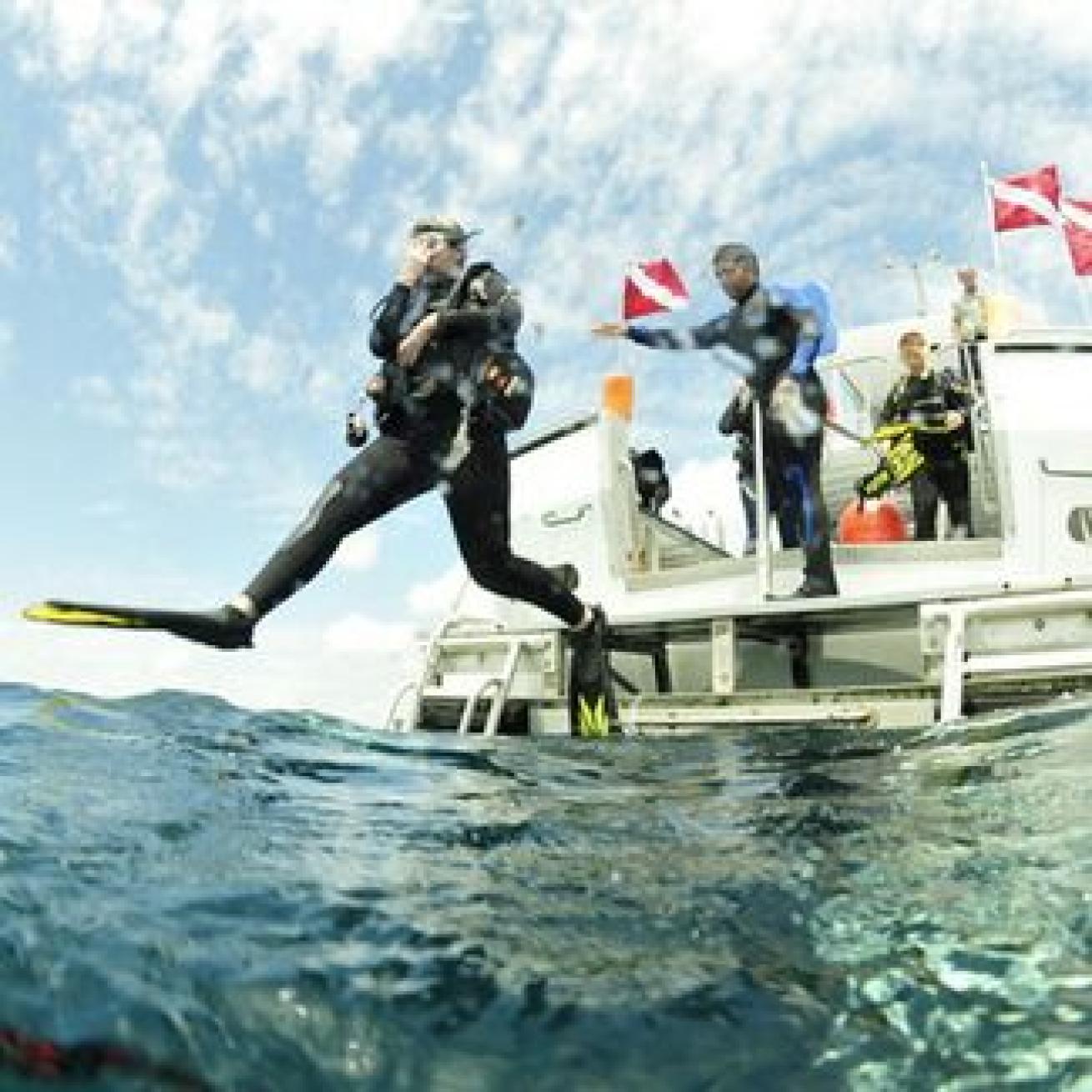
Ty SawyerThe author was used to doing giant-stride entries. Her first back-roll entry was not pretty.
2) Inflate your BC so you can maintain positive buoyancy once you’ve entered the water, and place your reg in your mouth.
3) Just as with a giant-stride entry, use the palm of your right hand to secure your reg and the fingertips of the same hand to keep your mask in place. Place your left hand over your mask strap at the back of your head, to stop the strap from slipping off upon entry, and to stop your head from hitting your cylinder valve.
4) Make sure that the water behind you is clear — especially if another diver has just entered before you. The divemaster or captain will let you know when to go, but it’s always a good idea for you to glance over your shoulder and make sure your entry spot is clear. If everyone is making their entry at the same time — which is what usually happens when you are making a negative descent — wait for the captain’s count or “go” command — and do not hesitate.
5) Tuck your chin into your chest, which helps prevent your head from hitting the tank valve. Keep your feet and knees together (you can also cross your ankles), and lean backward, rolling into the water. The way you fall backward is the key to making a gentle entry. If you force yourself backward, you’ll flip, your legs will possibly continue rolling over your head, and you’ll do a disorienting underwater somersault. Remember being a kid and standing at the foot of your bed or the edge of the pool and just falling backward? You let gravity help you along. This is the same thing.
Related Reading: Buoyancy Calculator—How Much You Need in Dive Weights
6) If you’re making a positive entry, you’ll surface immediately, just as you do with a giant stride. Give the captain the OK signal.
7) Clear the entry area and check to make sure all your gear is still in place.


